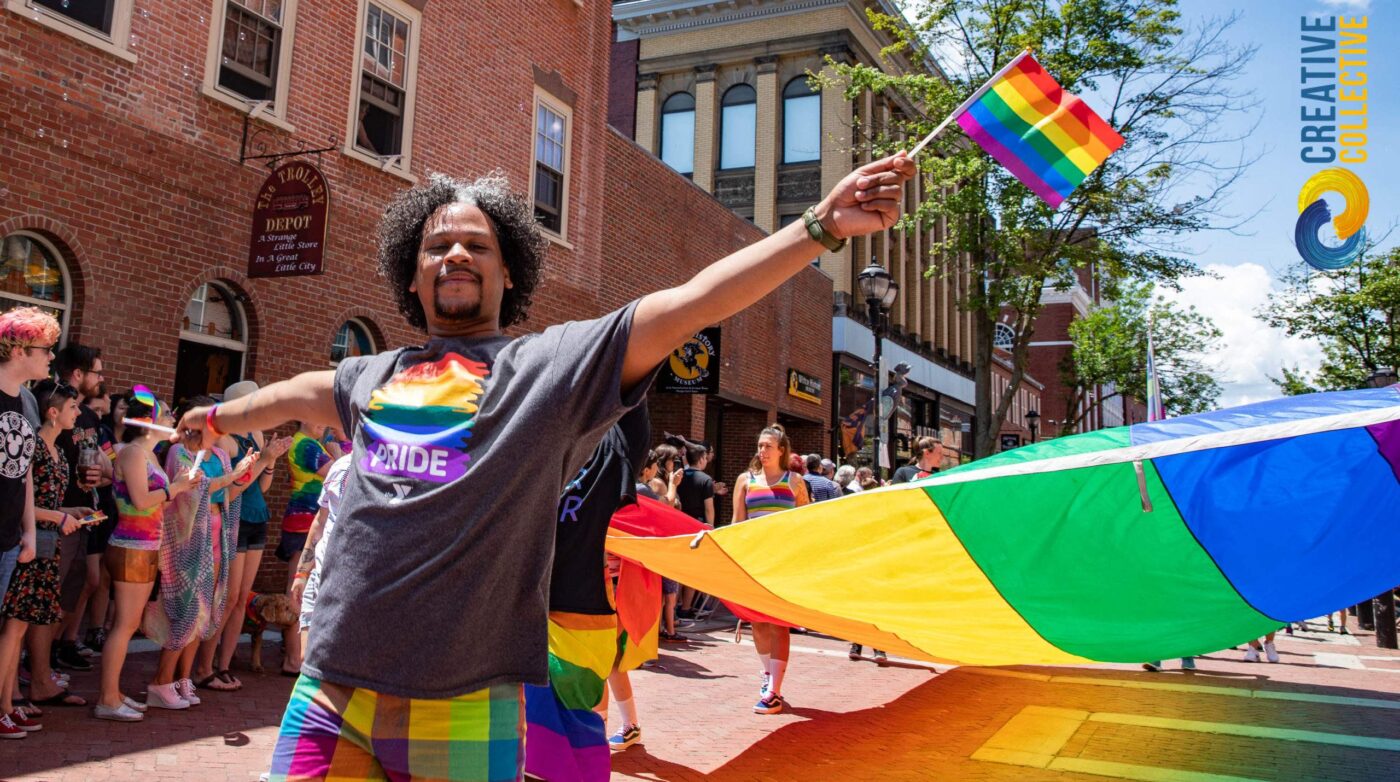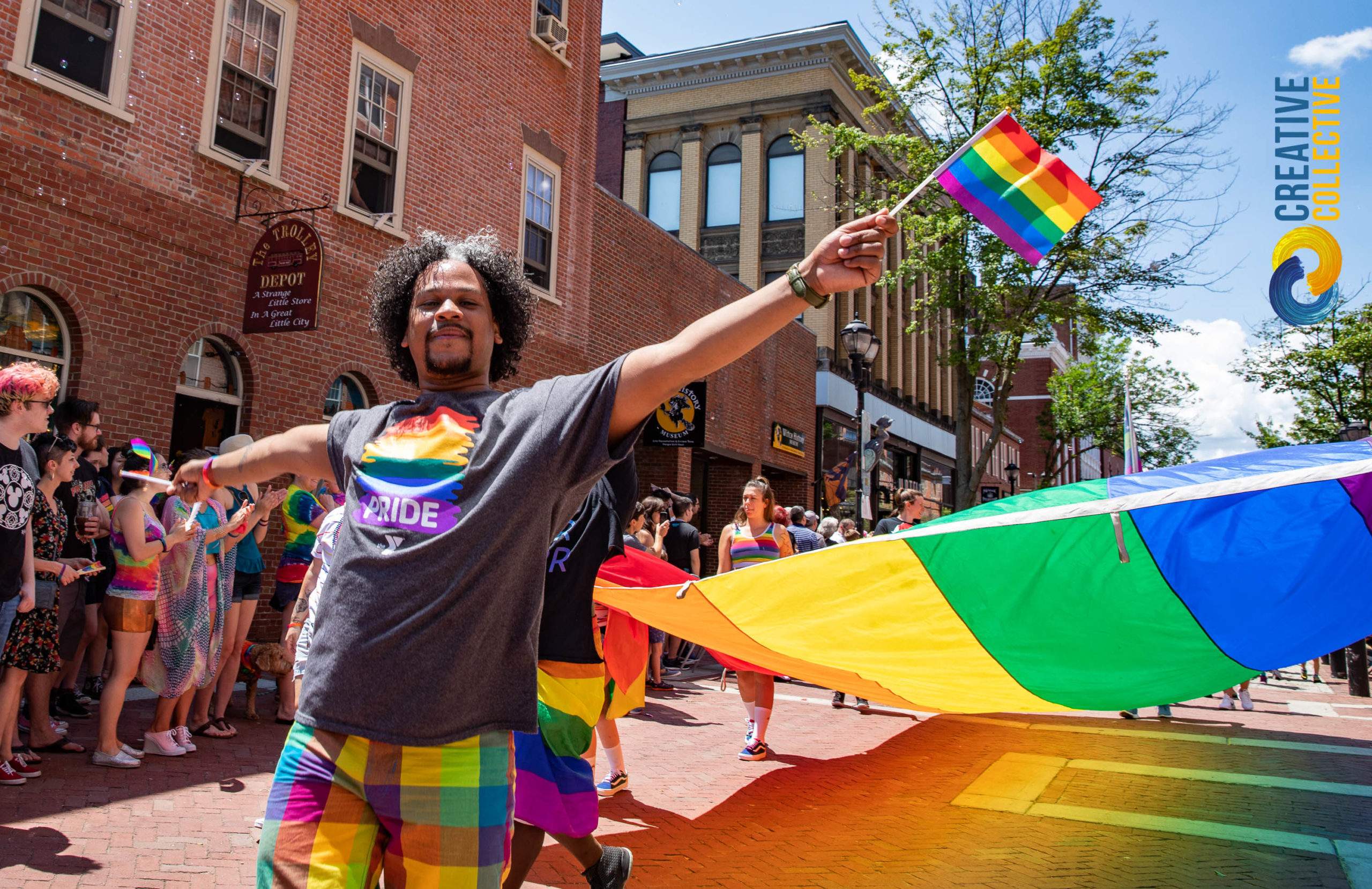by Joey Phoenix (They/Them)
Originally Published June 2020.
Editorial Note: I will not be using the LGBTQIA+ acronym in this article because I personally find it outdated, specifically because the T, which stands for transgender, and the I, which stands for Intersex, are gender identities whereas the rest are orientations – which is just confusing. Instead, I will group the community under the reclaimed umbrella term Queer or, shortly, Q. Click here to read the article that originally convinced me. But language is a fluid thing and this term may not work for everyone, so if you have thoughts, don’t hesitate to let me know. My email is at the bottom of the article.
Greetings humans of the internet, it’s Pride month (read: Gay Wrath Month) and I, Joey Phoenix, your friendly neighborhood white queer with platform privilege, am going to give you the facts about pronouns, orientations, and identities because there seems to be some confusion.
Secondary Editorial Note: Do you see the bit up there that mentions that I’m a white queer human? It’s essential that we discuss how BIPOC and African-American Queer history has been affected by rampant racism, transphobia, and homophobia. So here’s an article to check out about how we all can be better when it comes to being inclusive of the BIPOC and African-American Q Community.

And now on to the actual bit where I explain things.
This is by no means a comprehensive guide, so consider it more like a quick primer, a how-to pamphlet if you will, to guide you on your path to queer enlightenment and good allyship. I’m merely here to highlight the more commonly used phrases in the queer community, but I highly recommend that you do your own research (have you heard about my good friend Google?) and educate yourself on the nuance of queer language from people who are more highly qualified than myself.
But, in the quest towards helping you become a good queer ally, it’s important for you to know that it’s ok if you get it wrong, you’re going to get it wrong, and no one is going to judge you or blame you for that. We just need you to try, and when you mess up, to correct yourself without making it a big deal. Instead of apologizing when you misgender someone, just correct yourself automatically and move on. It’s simple! But we’ll get back to that later.
Because we probably need to start with what “misgendering” someone means.
What’s the difference between orientation and identity?
Sexual Orientation and Gender or Sexual Identity are two separate categories. For example, a cisgender heterosexual person is (not universally, but sometimes) someone who identifies as the gender they were assigned at birth and is attracted to people of the opposite sex.1
A non-binary panromantic demisexual human is (not universally, but sometimes) someone who doesn’t fall under the binary gender model (non-binary) who is romantically attracted to all genders (panromantic) but only sexually attracted to people who [insert person’s pronouns here] developed emotional connections with (demisexual).
Got that? Let’s break it down.
A gender identity is something an individual decides is their gender or gender expression (it’s a complex relationship that can be different for each person), a sexual orientation (or identity) denotes the kinds of humans you are, or are not,2 attracted to in regards to sexual or romantic involvement.3

Types of gender identities
Tertiary Editorial Note: Biological sex and gender are separate things and I don’t have the time to go into it in this article. If you want to learn more about the difference try this TED Radio Hour Podcast or this recent article by Forbes. But quickly, when I use the term gender (male or female) assigned at birth, I’m talking about the gender ascribed to you based on biological data [i.e. your bits] existing when you were brought into this world. Many people in the Queer community just don’t give this data a lot of weight.
This is NOT the full list, just some examples. It’s also important to note that language, like gender, is fluid, so a frequent update and frank discussions of terms will be an essential part of allyship. These definitions are not authoritative and your best bet is to just talk to your queer friends directly, because identiities mean different things to different people.
- Non-binary: Someone who doesn’t fall under the binary model of gender
- Transgender (Trans) Male/Man: Someone whose gender identity was assigned female at birth who (AFAB) identifies as male.4
- Transgender (Trans) Female/Woman: Someone whose gender identity was assigned male at birth (AMAB) who identifies as female
- Genderqueer: Someone who has a gender outside of the social construct of gender.
- Gender neutral: Someone who doesn’t identify as either male or female.
- Gender fluid: Someone whose gender isn’t fixed and varies over time
- Cisgender female/woman: Someone who was assigned female at birth and identifies as female
- Cisgender male/man: Someone who was assigned male at birth and identifies as male
I will also add that while someone’s gender identity might be a specific thing, their gender expression (i.e., how they present themselves to the world), might be something different. For example, a non-binary human might present as masc or femme/fem, but their presentation does not change their identity. This is why you should ask everyone you meet for their pronouns so that you don’t accidentally misgender someone based on your own assumptions of their identity.
In short, don’t assume gender. It’s rude.

Image by Creative Collective
Types of sexual or romantic orientations
Again, this list is not comprehensive. If you’d like to read more about sexual and romantic orientations beyond this list, or even more in-depth about this list, again I will introduce you to my dear friend Google.
- Asexual – someone who experiences very little or no sexual attraction to others
- Aromantic – someone who experiences very little or no romantic attraction to others
- Graysexual – someone who experiences some or little sexual attraction to others
- Grayromantic – someone who experiences some or little romantic attraction to others
- Homosexual – someone who experiences sexual attraction to those of the same gender
- Gay – someone who experiences romantic or sexual attraction to those of the same gender
- Lesbian – someone who identifies as female, femme, or fem who experiences romantic or sexual attraction to those of the same gender
- Bisexual – someone who experiences sexual attraction to those of the same or other genders
- Pansexual – someone who experiences sexual attraction to all genders
- Panromantic – someone who experiences romantic attraction to all genders
- Demisexual – someone who experiences sexual attraction to people they have an emotional connection with
- Heterosexual – someone who experiences sexual attraction to the opposite gender or to those who are not their gender5
A Primer on Pronouns

This is the bit that gets super tricky because in the mainstream culture (read: in white supremacist, Eurocentric traditions and cultures) people have typically assigned people’s gender according to what they have perceived, and not what the individual being gender assigned has explicitly decided themselves. This not only has completely ignored the existence of intersex people, but also the reality that many people do not identify with the gender they have been assigned.
The Q community has been attempting to make pronoun awareness ubiquitous. What this looks like is upon meeting a new person, you should ask them what pronouns they use. And then, without excuse, refer to them by whatever pronouns they use. Also, in solidarity with your Q friends, signing emails by including your pronoun usage is extremely important even if you are not a community member, because normalization of something that isn’t an easy subject helps your Q friends, loved ones, and colleagues feel safe at work and at home.
Some common pronouns (again, not a comprehensive list).
- They, Them, Their
- E, Em, Eir
- Zi (or Z), Zim, Zeir
- She, Her, Hers
- He, Him, His
Some people have multiple pronouns and are comfortable with, for example, she or they or they or zi. So if you ask someone for their pronouns and they respond he/they, you can use either one (but check first to make sure).
At the risk of repeating myself (risk taken, I am repeating myself), it’s IMPORTANT for you to know that it’s ok if you get it wrong, you’re going to get it wrong, and no one is going to judge you or blame you for that. We just need you to try, and when you mess up, to correct yourself without making it a big deal. Instead of apologizing profusely (this makes us uncomfortable) when you misgender someone, just correct yourself automatically and move on.
People’s pronouns are subject to change just like their names are subject to change. A person’s appearance does not affect their name or their pronouns, and they are the only ones who get to decide how they will be referred to. This isn’t open to debate, it’s just how things are. When a spouse gets married and changes their name to match their partner’s last name, everyone just takes that at face value and rolls with it.
Learn to do this too.
And again, you will be bad at this in the beginning. It’s ok to be bad at this, but the more you practice and the more you learn, the easier it will be.
I believe in you. Let’s work together to make this world safer and more inclusive. And, in case you missed it, #AllBlackLivesMatter
Quaternary editorial note: If you have read through this and Google isn’t giving you what you need, feel free to reach out to me at joeyphoenix@creativecollectivema.com to ask questions. Please include images of Bobtail Squids as proof of your desire to learn. This will also be an ongoing series, so if it leaves your head spinning, I’ll write more later.
I also will state openly my fallibility, so feel free to point things out that feel off to you. I’m still learning too.
Notes:
1 – Which includes trans men and women because trans men are men and trans women are women, this is not open for debate.
2 – #endasexualerasure
3 – Sexual and romantic attraction CAN be mutually exclusive. #endaromanticerasure
4 – A transgender person doesn’t have to be medically transitioning to identify as transgender. Whether they are medically transitioning or not is not your business.
5 – this is complicated to define because how can there be opposite genders when queer people actively oppose a binary?
Joey Phoenix is a non-binary faerie and very open to hearing feedback about this article. Message them at joeyphoenix@creativecollectivema.com
#BLACKLIVESMATTER
#BLACKTRANSLIVESMATTER
National Museum of African American History and Culture “Talking About Race” Web Portal
Action Bail Fund: https://secure.actblue.com/donate/wp4bl
Campaign Zero: https://www.joincampaignzero.org
Black Visions Collective: https://secure.everyaction.com/4omQDAR0oUiUagTu0EG-Ig2
The National Bail Out: https://secure.actblue.com/donate/freeblackmamas2020
Reclaim the Block: https://www.reclaimtheblock.org/home
Unicorn Riot: https://unicornriot.ninja/five-years-of-unicorn-riot/









